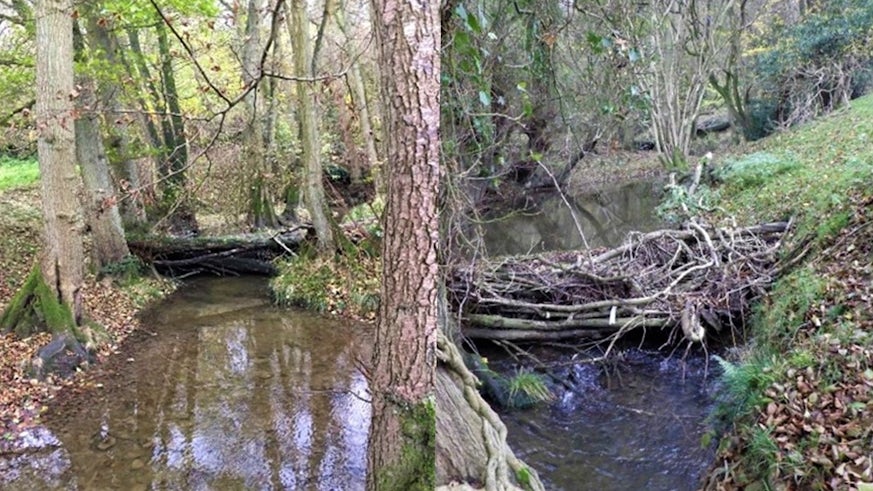Investigating the role of leaky barriers in flood attenuation
1 December 2020

This interdisciplinary collaboration investigated the role of leaky barriers in flood attenuation and will provide practical recommendations to stakeholders.
Flooding is currently one of the most socio-economically costly natural disasters. Natural flood management aims to improve traditional flood risk management methods by using natural processes such as storage ponds, woodland planting and leaky barriers, at a catchment scale.
Man-made leaky barriers are designed to imitate beaver dams and log jams or woody debris dams. Leaky barriers partially or fully obstruct river flow by diverting it onto floodplains, which enhances floodplain storage and increases ground infiltration. This slows down surface flows and reduces flooding downstream.
Leaky barriers also help to restore deteriorating fluvial habitats, by providing refugia and shade for fish, improving water quality, and trapping sediment, organic matter and nutrients.
This research project was led by an interdisciplinary team composed of PhD student Valentine Muhawenimana and Dr Catherine Wilson, both from the School of Engineering and undergraduate student Jelena Nefjodova and Prof Jo Cable from the School of Biosciences, all affiliated to the Water Research Institute.

This collaborative research provided an excellent opportunity for interdisciplinary training and resulted in wider research outreach to stakeholders from different disciplines.
For the first time, the team quantified the hydraulic changes to flow processes caused by leaky barriers. These changes alter the upstream surface water profile, divert flow onto floodplains, and reduce the downstream water levels. In Cardiff University's laboratory flume, the researchers experimentally tested various designs of leaky barriers for two flood conditions.

Results demonstrated that the leaky barriers raised the upstream flow area by 0 to 30%. Leaky barrier designs which maximise channel obstruction will slow down the flow during a flood and delay the time for the flood peak to reach a downstream community.
Non-porous barriers resulted in at least twice the area afflux compared to their porous counterparts. This indicates that accumulation of organic matter and sediments, which render the barriers more watertight, will increase the leaky barriers’ flood storage and downstream flood attenuation over time.
The full publication is available in the Journal of Hydrology.
Share this story
For more information, visit the Water Research Institute website.

